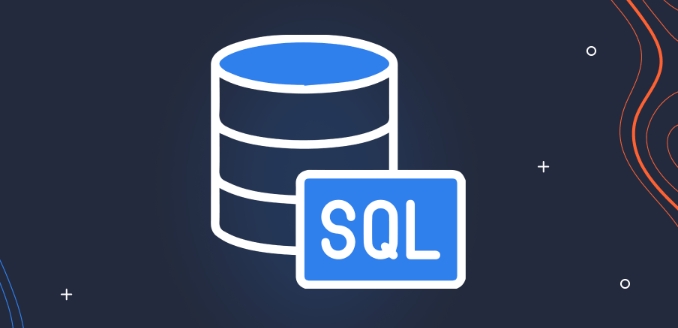Denormalizing a SQL database should consider the following four situations: 1. When query performance becomes a bottleneck and JOIN operations are consumed heavily, query can be simplified through pre-computing; 2. When the application requires a simpler data model to avoid complex JOINs or retain historical states, such as directly storing product information in an order; 3. When using read-write separation or cache layers, it can be combined with regular synchronized non-standardized tables to reduce application complexity; 4. When the demand for horizontal scaling increases, to avoid cross-slicing JOINs, an embedded structure can be used in distributed systems. However, it should always be carried out on a standardized basis and the necessity should be confirmed before implementation.

Denormalizing a SQL database isn't something you do upfront — it's usually a response to real-world performance issues. The idea is simple: you trade off some data redundancy to gain faster query performance or simplify complex joins. But when exactly should you consider doing this? Let's break it down.

1. When Query Performance Becomes a Bottleneck
If your queries are getting slower and joins are the main culprit, denormalization can help. Especially in read-heavy applications like dashboards or reporting tools, joining multiple tables on every request can become expensive.
- Common signs :
- Queries taking seconds instead of million seconds
- Frequent use of
JOINacross large tables - High load on the database server during peak times
Instead of joining five tables every time you want to display user activity, for example, you might store a precomputed summary directly in the user table or a dedicated read table.

Just be aware: you're trading write performance and data integrity for faster reads. So only do this if you've confirmed that the joins were actually causing problems.
2. When Your Application Needs Simpler Data Models
Sometimes the schema gets so complicated that it becomes hard to maintain or scale. If developers are spending more time writing joins than building features, simplifying the structure by denormalizing can make life easier.

- This often happens in:
- Analytics systems where aggregations are reused
- E-commerce order details that need to preserve product state at purchase time (price, name, etc.)
A classic example is storing product info directly in an order line item table instead of referencing it through a foreign key. That way, even if the product changes later, your order history remains accurate and easy to retrieve.
This kind of denormalization helps avoid cascading updates and keeps historical data consistent without extra logic.
3. When You're Using Read Replicas or Caching Layers
If you're already using read replicas or caching mechanisms like Redis or Materialized Views, denormalization fits right in. These settings are designed to handle data duplication anyway, so pushing some of the denormalization logic into the database layer can reduce application complexity.
- Scenarios where this works well:
- Pre-aggregating data for fast dashboard loads
- Storing frequently accessed fields together
- Denormalizing JSON payloads directly into columns
You can build denormalized tables that sync periodically from your normalized source, giving you best-of-both-worlds flexibility. Just remember to manage consistency carefully — stale data in a denormalized table can cause subtle bugs.
4. When Scaling Forces Trade-offs
As your app grows, the pressure to scale horizontally increase. Joins don't scale well across sharded databases, so denormalization becomes a practical necessity in many distributed settings.
For example:
- User profiles with embedded following counts
- Chat apps storing message metadata directly with messages
- Logging systems that include contextual data inline
These structures let you split data cleanly without worrying about cross-shard joins. But again, this comes at the cost of more complex writes and potential data drift — which means you'll need solid monitoring and reconciliation strategies.
In practice, denormalization should always come after normalization. Start clean, track performance, and only denormalize when needed. It's not a one-size-fits-all solution — but when applied thoughtfully, it can make a big difference.
Basically that's it.
The above is the detailed content of When to Denormalize Your SQL Database: A Practical Guide. For more information, please follow other related articles on the PHP Chinese website!

Hot AI Tools

Undress AI Tool
Undress images for free

Undresser.AI Undress
AI-powered app for creating realistic nude photos

AI Clothes Remover
Online AI tool for removing clothes from photos.

Clothoff.io
AI clothes remover

Video Face Swap
Swap faces in any video effortlessly with our completely free AI face swap tool!

Hot Article

Hot Tools

Notepad++7.3.1
Easy-to-use and free code editor

SublimeText3 Chinese version
Chinese version, very easy to use

Zend Studio 13.0.1
Powerful PHP integrated development environment

Dreamweaver CS6
Visual web development tools

SublimeText3 Mac version
God-level code editing software (SublimeText3)

Hot Topics
 Defining Database Schemas with SQL CREATE TABLE Statements
Jul 05, 2025 am 01:55 AM
Defining Database Schemas with SQL CREATE TABLE Statements
Jul 05, 2025 am 01:55 AM
In database design, use the CREATETABLE statement to define table structures and constraints to ensure data integrity. 1. Each table needs to specify the field, data type and primary key, such as user_idINTPRIMARYKEY; 2. Add NOTNULL, UNIQUE, DEFAULT and other constraints to improve data consistency, such as emailVARCHAR(255)NOTNULLUNIQUE; 3. Use FOREIGNKEY to establish the relationship between tables, such as orders table references the primary key of the users table through user_id.
 Key Differences Between SQL Functions and Stored Procedures.
Jul 05, 2025 am 01:38 AM
Key Differences Between SQL Functions and Stored Procedures.
Jul 05, 2025 am 01:38 AM
SQLfunctionsandstoredproceduresdifferinpurpose,returnbehavior,callingcontext,andsecurity.1.Functionsreturnasinglevalueortableandareusedforcomputationswithinqueries,whileproceduresperformcomplexoperationsanddatamodifications.2.Functionsmustreturnavalu
 Can You Provide Code Examples Demonstrating Pattern Matching in SQL?
Jul 04, 2025 am 02:51 AM
Can You Provide Code Examples Demonstrating Pattern Matching in SQL?
Jul 04, 2025 am 02:51 AM
Pattern matching functions in SQL include LIKE operator and REGEXP regular expression matching. 1. The LIKE operator uses wildcards '%' and '_' to perform pattern matching at basic and specific locations. 2.REGEXP is used for more complex string matching, such as the extraction of email formats and log error messages. Pattern matching is very useful in data analysis and processing, but attention should be paid to query performance issues.
 Using SQL LAG and LEAD functions for time-series analysis.
Jul 05, 2025 am 01:34 AM
Using SQL LAG and LEAD functions for time-series analysis.
Jul 05, 2025 am 01:34 AM
LAG and LEAD in SQL are window functions used to compare the current row with the previous row data. 1. LAG (column, offset, default) is used to obtain the data of the offset line before the current line. The default value is 1. If there is no previous line, the default is returned; 2. LEAD (column, offset, default) is used to obtain the subsequent line. They are often used in time series analysis, such as calculating sales changes, user behavior intervals, etc. For example, obtain the sales of the previous day through LAG (sales, 1, 0) and calculate the difference and growth rate; obtain the next visit time through LEAD (visit_date) and calculate the number of days between them in combination with DATEDIFF;
 How to find columns with a specific name in a SQL database?
Jul 07, 2025 am 02:08 AM
How to find columns with a specific name in a SQL database?
Jul 07, 2025 am 02:08 AM
To find columns with specific names in SQL databases, it can be achieved through system information schema or the database comes with its own metadata table. 1. Use INFORMATION_SCHEMA.COLUMNS query is suitable for most SQL databases, such as MySQL, PostgreSQL and SQLServer, and matches through SELECTTABLE_NAME, COLUMN_NAME and combined with WHERECOLUMN_NAMELIKE or =; 2. Specific databases can query system tables or views, such as SQLServer uses sys.columns to combine sys.tables for JOIN query, PostgreSQL can be used through inf
 How to backup and restore a SQL database
Jul 06, 2025 am 01:04 AM
How to backup and restore a SQL database
Jul 06, 2025 am 01:04 AM
Backing up and restoring SQL databases is a key operation to prevent data loss and system failure. 1. Use SSMS to visually back up the database, select complete and differential backup types and set a secure path; 2. Use T-SQL commands to achieve flexible backups, supporting automation and remote execution; 3. Recovering the database can be completed through SSMS or RESTOREDATABASE commands, and use WITHREPLACE and SINGLE_USER modes if necessary; 4. Pay attention to permission configuration, path access, avoid overwriting the production environment and verifying backup integrity. Mastering these methods can effectively ensure data security and business continuity.
 How to create a user and grant permissions in SQL
Jul 05, 2025 am 01:51 AM
How to create a user and grant permissions in SQL
Jul 05, 2025 am 01:51 AM
Create a user using the CREATEUSER command, for example, MySQL: CREATEUSER'new_user'@'host'IDENTIFIEDBY'password'; PostgreSQL: CREATEUSERnew_userWITHPASSWORD'password'; 2. Grant permission to use the GRANT command, such as GRANTSELECTONdatabase_name.TO'new_user'@'host'; 3. Revoke permission to use the REVOKE command, such as REVOKEDELETEONdatabase_name.FROM'new_user
 What is the SQL LIKE Operator and How Do I Use It Effectively?
Jul 05, 2025 am 01:18 AM
What is the SQL LIKE Operator and How Do I Use It Effectively?
Jul 05, 2025 am 01:18 AM
TheSQLLIKEoperatorisusedforpatternmatchinginSQLqueries,allowingsearchesforspecifiedpatternsincolumns.Ituseswildcardslike'%'forzeroormorecharactersand'_'forasinglecharacter.Here'showtouseiteffectively:1)UseLIKEwithwildcardstofindpatterns,e.g.,'J%'forn






